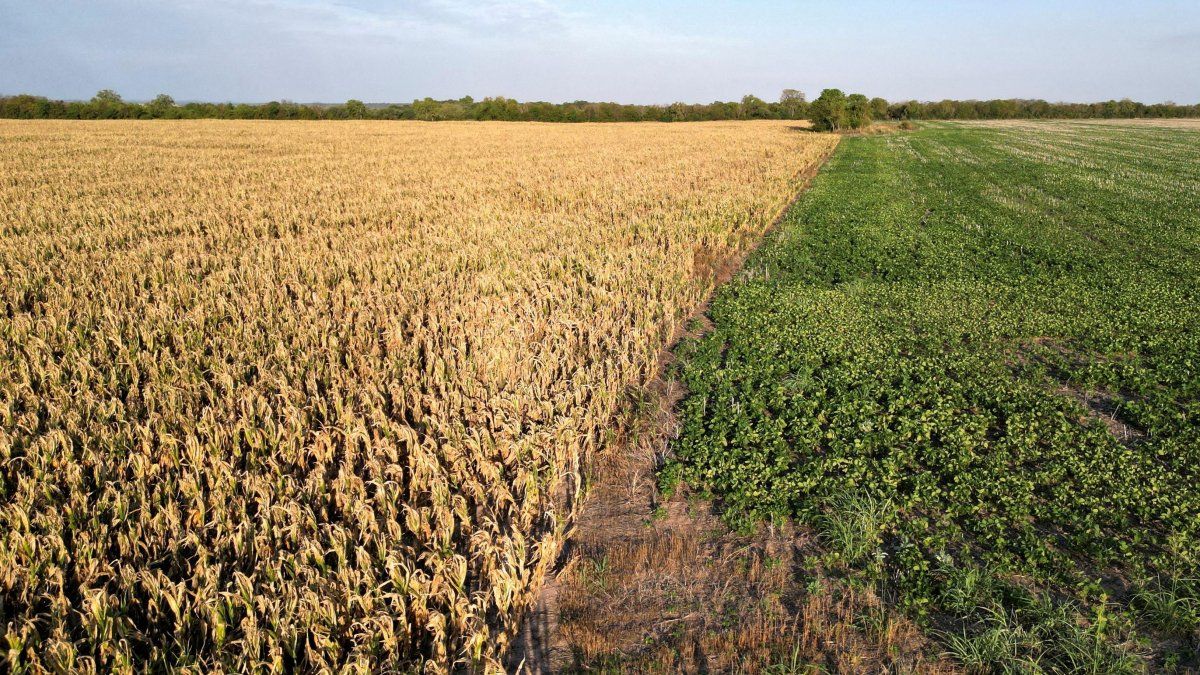Due to the effect of the drought that affected the field last year and at the beginning of this year, soybean production was 51.5% below that registered in the previous cycle, with a year-on-year decrease of some 22.3 million tons. , indicated the Grain Exchange of Buenos Aires (BCBA). It was also the worst since the stock exchange began its records in the year 2000. The collapse in yields reached 45%, reaching the worst levels in 10 years, with just 15.4 quintals per hectare (qq/ha).
With the collection of the last standing lots, in the southeast of Buenos Aires, production totaled 21 million tons, the lowest volume in more than two decades.
“The drought, added to the high temperatures recorded over the center of the agricultural region during a large part of the crop cycle, have resulted in losses of harvestable area, mainly for second-rate soybeans, and have generated a significant decrease in yields.”explained the specialists of the Buenos Aires stock exchange.
If the country’s agricultural regions are broken down, it can be seen that productivity in almost all corners of the territory was poor. The average yield on the North Core ended at 15.2 qq/ha and for the South Core at 13.8 qq/ha, having a great impact on production at the national level”, since in both areas they are the ones that contribute the most soybeans at the national level.
soy2.jpg
Those who improved
The center-east of Entre Ríos was the area with the lowest yield, reaching only 7.8 qq/ha, while in the north of the agricultural region, due to delays in planting due to low humiditythe occurrence of some rainfall pulses, mainly over Salta and the east of Santiago del Estero, put a stop to the decrease in yields of 19.4 qq/ha for the NOA, and 21.1 qq/ha for the NEA, productivities that were above those obtained in the core zone.
The other Argentine agricultural area where the drought and late frosts did not hit and yields above the historical average were obtained was the southeast of Buenos Aires, thanks to the fact that the crops enjoyed above-average temperatures and optimal growing conditions. humidity, obtaining yields of 23.8 qq/ha, with peaks of 35 qq/ha on average in some areas.
Wheat could be more affected
On the other hand, the cuts in the intention to sow wheat continue. Thus, this week the BCBA adjusted the implantation estimate downward by 100,000 hectares, placing it at 6 million hectares. This implies, for the moment, a drop of 1.6% compared to the previous campaign, when at the beginning of the works an expansion of 5 percentage points was expected in the area.
“This adjustment is mainly due to the lack of humidity to comply with the planting plans in the central west of the agricultural region, where the planting window is advanced,” stated the Buenos Aires Stock Exchange. Basically, the lack of rain in Córdoba and the west of Buenos Aires prevented some producers from undertaking the implementation of the winter crop.
With this new figure, wheat planting now stands at 71.9% of the area stipulated for cultivation, with 4.3 million hectares already planted. Despite the smaller area, the implementation work still shows a delay of 1.6 percentage points.
Source: Ambito




